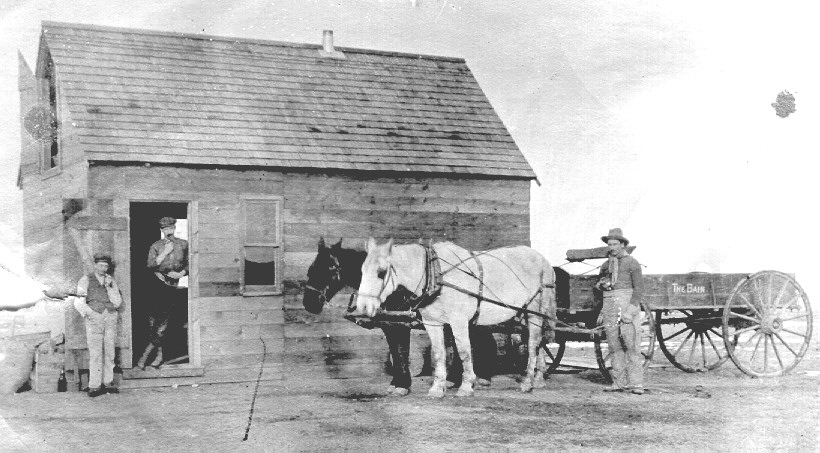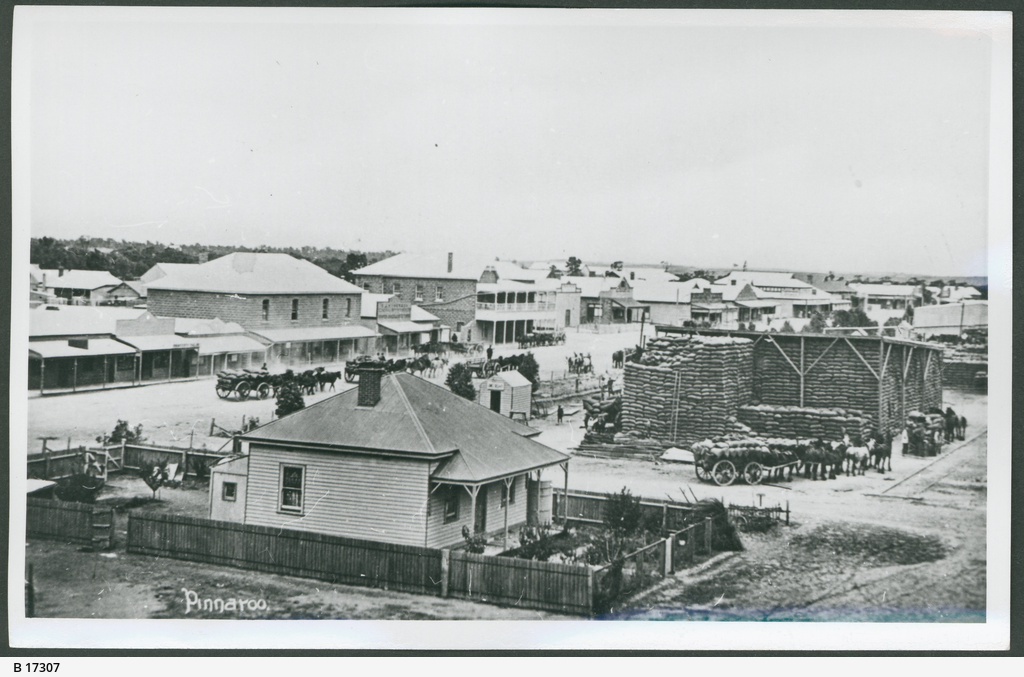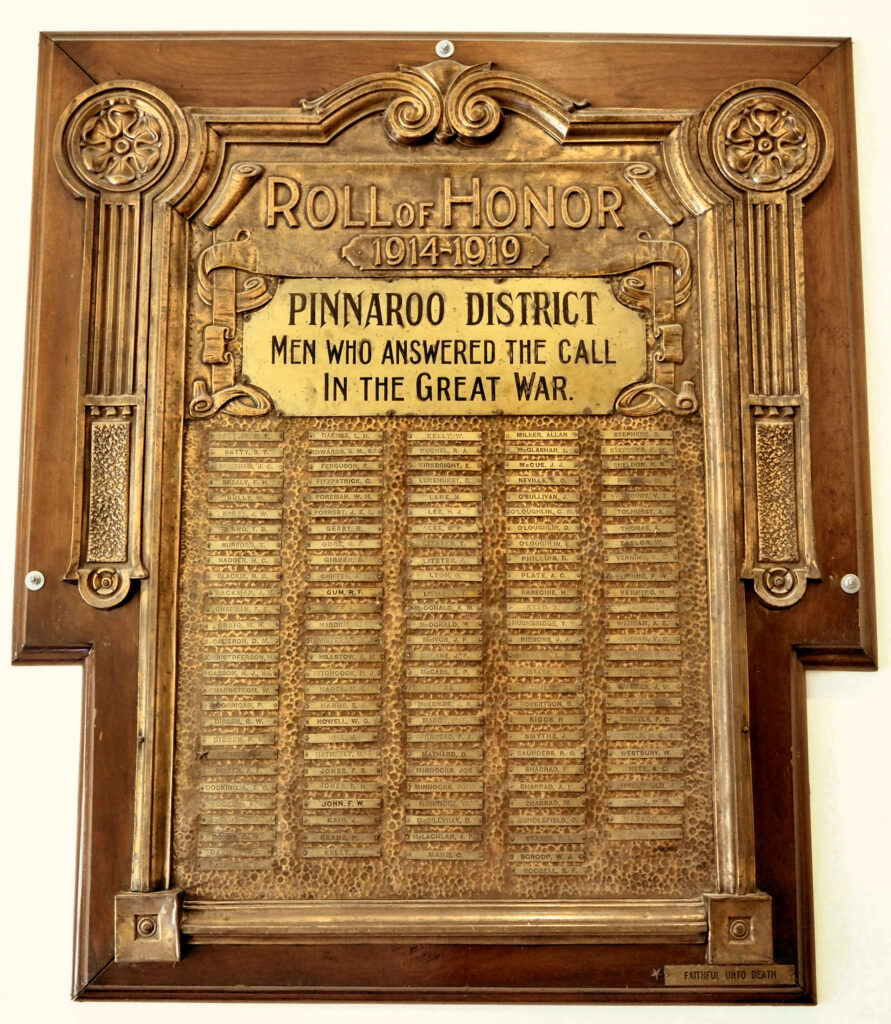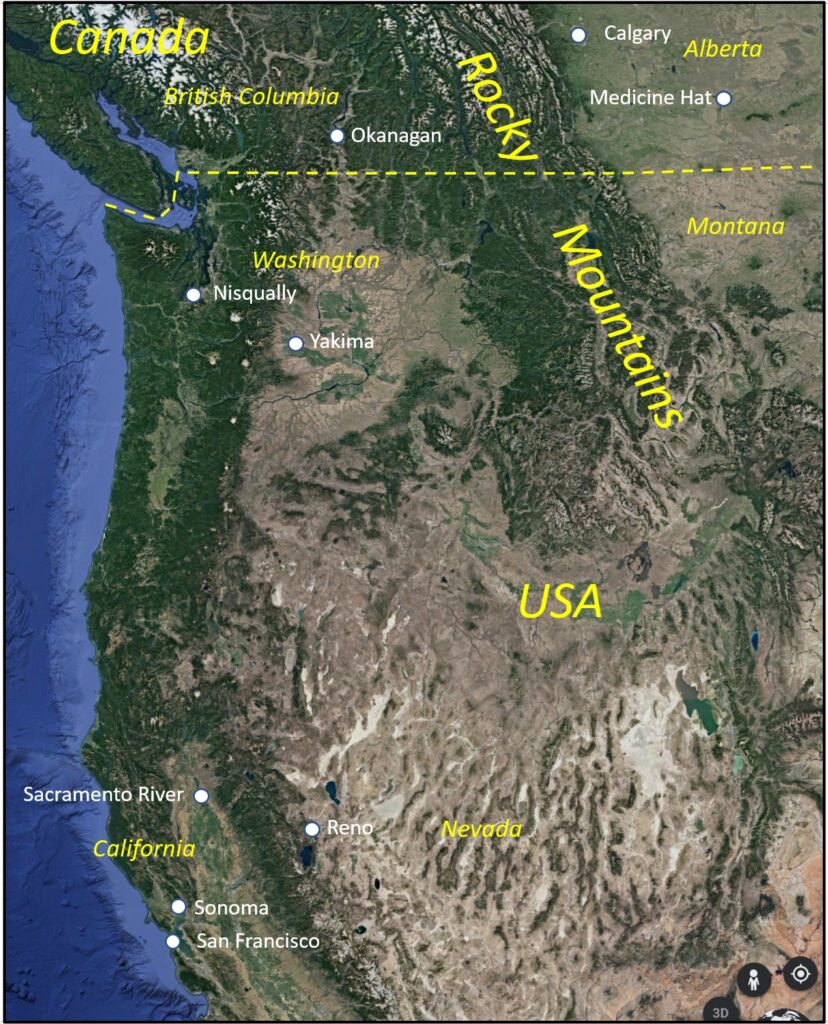Family legend
It is well-known in the family that, after school and before the Great War, Barrowsgate – real name James Hugh Smythe (“Jim”) – travelled widely, visiting Canada, USA and Australia. As is usually the case with oral histories, the exact details of these travels vary, depending on who you ask, and when you ask them. Several of Jim’s published stories obviously draw on his travel experiences. After comparing these various accounts with such documentary evidence as can be found, a possible itinerary is as follows:
Itinerary
We know for sure that Jim was in Alberta, Canada and California, USA in 1910 and 1911 and in Australia by December 1913. He arrived in Canada in March 1910 (aged 27) and took on a “homestead” near Medicine Hat, Alberta – adjacent to the homesteads of two of his cousins (Hugh (aged 27) and Bernard (aged 24) – sons of Jim’s uncle John in Aberdeen) who had travelled out the previous year.

Homesteads were plots of land that were given free of charge by the Canadian Government provided the occupant built a dwelling and cultivated the land. A large number of Scottish folk emigrated to Canada to start a new life under this scheme.
It is reasonably likely that Jim remained on the homesteads for a while before travelling to San Francisco in July 1910. He then travelled to Mexico before travelling back to Sacramento in the Spring of 1911, where he worked on a dredger involved in the Sacramento River Flood Control Project. If that was his itinerary, he must have returned to the homestead in Alberta in time for the Canada Census on 1st June 1911 and then returned to San Francisco by December 1911 (when the newspaper advert shown below was placed).

The persistence of both “family legend” and his written stories does suggest that he was at times, a gold miner and fruit picker (possibly both in California) and possibly also visited Mexico City and Washington State USA. It is possible that Jim did work as a gold miner, but it cannot have been during either the California or Klondike “rush” and it probably involved digging rather than panning or dredging (the earlier methods).
There is no mention of Jim in the British Newspaper Archive between August 1903 and August 1905, so, if Jim had indeed been to Canada prior to 1910 (as he stated on the ship’s passenger list when he arrived in 1910), it would likely have been between September 1903 and July 1905 (i.e. between the ages of 18 and 20) because there wouldn’t have been time for him to have been to Canada and back in between the various events recorded in the local newspaper.
Until further evidence is found, Jim’s travels can probably be summarised as follows:
Possible 1903-1905 trip
| Place | Occupation | Likely date |
| Halifax, NS | n/a | 1903 |
| Calgary, Alberta | Labouring | 1903 |
| British Columbia, Canada | Salmon fishery work | 1903 |
| Yukon, Canada | Gold mining | 1904 |
| Yakima, WA, USA | Apple picking/ranching | 1904 |
| Nisqually, WA, USA | Labouring | 1904 |
| California, USA | Gold mining | 1904 |
| California, USA | Fruit farming | 1904 |
| Texas, USA | Cowboy | 1904 |
| St Louis, MO, USA | Ship’s engineer | 1904 |
August 1905 to Mar 1910
During this period, Jim was living in Echt. Apart from managing the farm, Jim was listed in the Aberdeen Press and Journal on several occasions as being present at various whist and quoits matches in the local area.
1910 onwards
Documented events/periods in bold
| Place | Occupation | Likely or Confirmed date |
| Halifax, NS | Arrival | March 1910 |
| Medicine Hat, AB | Ranching | March 1910 |
| San Francisco/Reno | Travelling/to watch boxing match | July 1010 |
| Mexico City | Not known | August – December 1910 |
| San Francisco | Casual work | January 1911 |
| Sacramento, CA | Sacramento river dredging | Spring 1911 |
| Medicine Hat, Alberta | Ranching | June 1911 |
| Sonoma, CA | Travelling | Summer 1911 |
| San Francisco, CA | Seeking farm work | December 1911 |
| Tahiti | Deckhand on a schooner | 1912 |
| Australia | Cattle drover | 1913 |
| Australia (South-North) | Travelling in Ford Model T | 1913 |
| Waikerie, South Australia | Relief hotel manager | 1913 |
| Pinnaroo, SouthAustralia | Barman | December 1913 – August 1914 |
| Adelaide, Australia | Enlisting | September 1914 |
Jim gave up his Alberta homestead when he left in 1911, but his two cousins remained there until the early 1920s.
At some point between 1912 and 1913, Jim must have arrived in Australia via Tahiti. Jim’s older brother Frank had settled in Australia after arriving in January 1906. By 1912, Frank was a commercial salesman, based in Adelaide and travelling throughout South Australia in a De Dion Bouton motor car.
In 1913, Jim got a job with an Adelaide hotel chain. His first posting was as a relief manager of a hotel in Waikerie, a new settlement on the Murray River, around 110 miles north-east of Adelaide.
Jim later recalled “I arrived in Waikarie after a 50 mile trip for river steamer from Morgan South Australia”.

At that time, there was a railway from Adelaide to Morgan, but the rest of the journey had to be completed by steamboat on the Murray River. After disembarking at Waikerie, Jim continues:
“As I walked up the steep hill towards the hotel, I was surprised to see a crowd of both sexes busily engaged in filling all sorts of receptacles with a dirty-looking liquid which flowed down the side of the road into a small hastily constructed dam. When I got nearer a most familiar odour could be smelt and I suddenly realised what the liquid was. It was beer”.
After this job, Jim became a resident of Pinnaroo, a small agricultural town around 150 miles to the east, near the border with the state of Victoria. Pinnaroo at this time was experiencing a period of rapid growth, spurred by the opening of a new railway line which allowed the agricultural produce to be rapidly transported to market.
Jim was a member of the (Australian) Royal Caledonian Society, and, in December 1913 took part in a Highland Games in Pinnaroo, organised by the local branch.
There were, at that time, many hotels and bars in Pinnaroo so it is likely that he was sent there after his temporary job at Waikerie came to an end. In any case, he went straight to the army from Pinnaroo and when he enlisted in the Australian Army in September 1914, Jim gave as his occupation “Barman”.

There is a plaque in the Pinnaroo Institute bearing the names of the local men who fought in the Great War. Jim’s name is in the second column from the right, nine up from the bottom.


